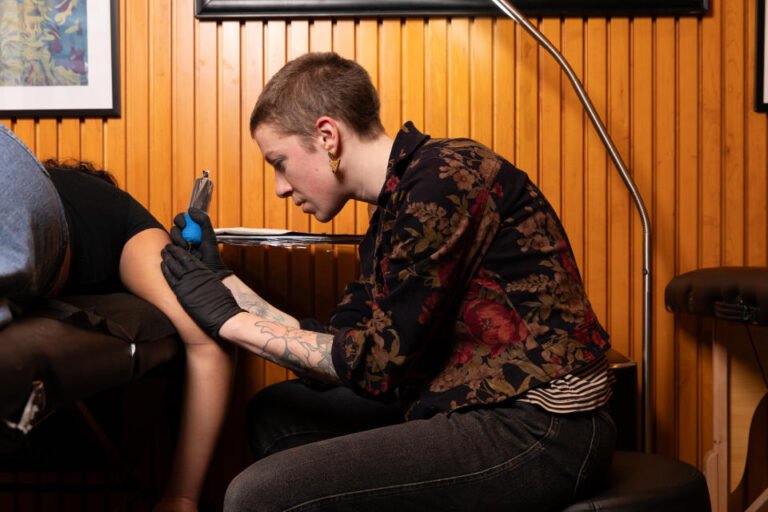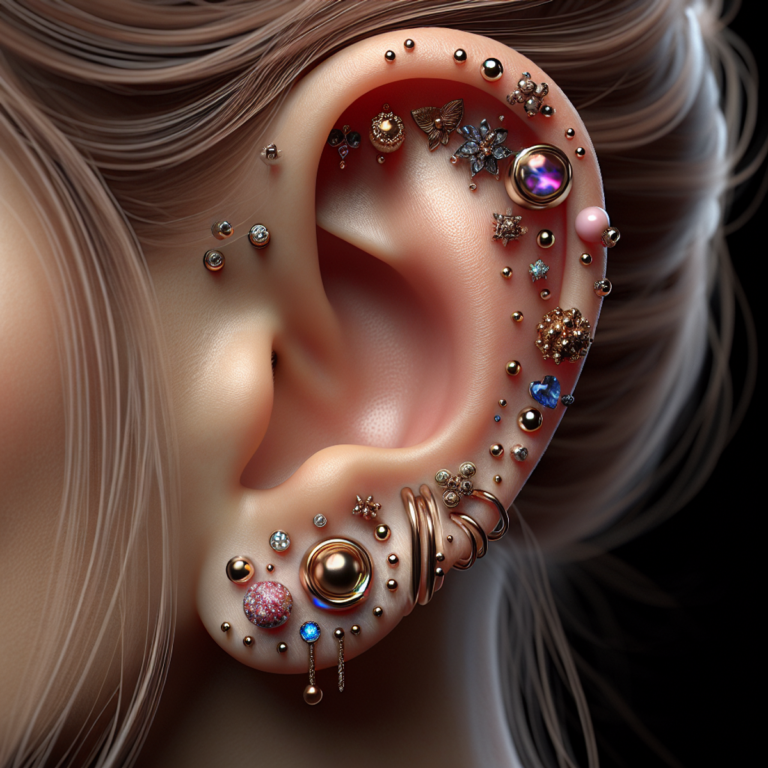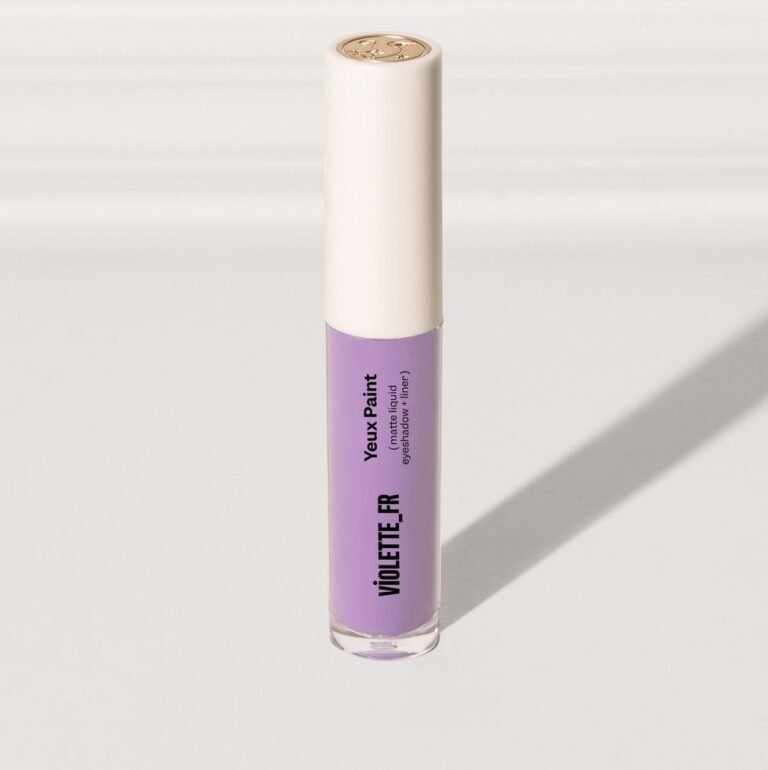Teen Acne: How to Treat & Prevent This Common Skin Condition

Introduction
Teen acne is a common skin problem during adolescence. It affects about 80% of teenagers and shows up as different kinds of bumps like whiteheads, blackheads, pimples, and pustules.
These usually show up on the face, neck, shoulders, upper back, and chest. The main reason is hormonal changes during puberty that make the oil glands produce too much oil (sebum), which clogs the pores.
Key takeaway: Knowing what causes teen acne, how to prevent it, and what treatments are available can help you deal with breakouts and get clearer skin. This article will cover each of these topics to give you practical advice and tips for handling this common skin issue effectively.
Understanding Teen Acne
Teen acne, also known as acne vulgaris, is a common skin condition that appears during adolescence due to hormonal changes. Unlike other types of acne that may occur in adulthood, teen acne mainly happens because of the changes in hormone levels during puberty. These hormonal shifts trigger the sebaceous glands, causing an excess production of oil (sebum) which can block pores.
Types of Acne Lesions
Teenagers often experience different types of acne lesions. These skin bumps vary in appearance and severity:
- Whiteheads: Closed comedones where the pore is completely blocked, trapping oil and dead skin cells beneath the skin’s surface.
- Blackheads: Open comedones where the pore remains partially open. The trapped oil oxidizes and turns black when exposed to air.
- Pimples: Inflamed lesions that occur when whiteheads or blackheads become infected with bacteria, leading to redness and swelling.
Each type of acne lesion has its unique characteristics and challenges, requiring specific care and treatment strategies. Understanding these differences helps in choosing the right approach for clearer skin.
Causes of Teen Acne
Hormonal fluctuations during puberty play a significant role in triggering acne breakouts. During adolescence, the body undergoes various hormonal changes that stimulate the sebaceous glands, causing them to produce more sebum, or oil. This excess oil production can lead to clogged pores, creating an environment where acne-causing bacteria thrive.
Sebaceous Glands and Their Role
Sebaceous glands are tiny oil-producing glands located in the skin, primarily on the face, neck, shoulders, upper back, and chest. These glands secrete sebum through hair follicles to lubricate and protect the skin. When these glands become overactive due to hormonal changes, the increased sebum can mix with dead skin cells and other debris, clogging pores.
How Increased Oil Production Leads to Acne
- Clogged Pores: Excess sebum combines with dead skin cells inside hair follicles, leading to clogged pores. This blockage prevents normal skin shedding and creates a breeding ground for bacteria.
- Bacterial Growth: The bacteria known as Propionibacterium acnes (P. acnes) naturally exist on the skin but multiply rapidly in clogged pores filled with sebum. This bacterial growth contributes to inflammation and the formation of pimples.
- Inflammation: As the immune system responds to bacterial overgrowth in clogged pores, it triggers an inflammatory response. This leads to redness, swelling, and sometimes pus-filled lesions.
Types of Acne Lesions
Teen acne can manifest in various forms:
- Whiteheads: Closed clogged pores filled with sebum and dead skin cells.
- Blackheads: Open clogged pores that oxidize upon exposure to air.
- Pimples (Pustules): Inflamed lesions filled with pus resulting from bacterial infection.
By understanding the underlying causes of teen acne—hormonal changes and increased oil production—you can better manage this common skin condition. Establishing effective skincare routines and adopting healthy lifestyle habits can help mitigate these factors and promote clearer skin.
Effective Prevention Strategies for Teen Acne
Establishing a consistent skincare routine tailored for acne-prone skin is crucial to manage and prevent breakouts. A daily regimen that includes gentle cleansing and moisturizing steps can make a significant difference.
Daily Skincare Routine for Acne-Prone Skin
1. Gentle Cleansing
- Use a mild, fragrance-free cleanser twice daily.
- Avoid harsh scrubbing; instead, gently massage the cleanser onto your skin.
- Over-washing can strip the skin of essential oils, leading to irritation and potential breakouts.
2. Moisturizing
- Select a lightweight, oil-free moisturizer.
- Look for products labeled “non-comedogenic” to ensure they won’t clog your pores.
- Even oily skin needs hydration to maintain a healthy balance.
Choosing Non-Comedogenic Makeup Products
Makeup choices can significantly impact acne-prone skin. Opt for products that minimize the risk of clogged pores and subsequent breakouts.
- Foundation:
- Choose oil-free or water-based foundations.
- Mineral-based makeup can be less irritating for sensitive skin types.
- Powders:
- Use non-comedogenic powders to set makeup without adding extra oil.
- Avoid heavy, thick formulations that may contribute to pore blockage.
- Makeup Removal:
- Always remove makeup thoroughly before bed.
- Utilize gentle makeup removers or micellar water to ensure all residues are eliminated.
By integrating these practices into your daily routine, you create a foundation for clearer, healthier skin. Prioritizing non-comedogenic products and consistent skincare can help reduce the severity and frequency of acne breakouts.
To further enhance your skincare routine, consider following this comprehensive AM and PM skincare routine designed specifically for oily skin. Additionally, check out this guide on the best skincare routine for teens for more tailored advice.
Lifestyle Factors That Can Influence Teen Acne Breakouts
How Diet Affects Your Skin
What you eat can have a significant impact on your skin health. Certain foods are known to potentially trigger or worsen acne breakouts:
- High-Glycemic Foods: Foods such as white bread, sugary cereals, and soda can spike blood sugar levels, leading to increased insulin levels. Elevated insulin can increase oil production, contributing to clogged pores.
- Dairy Products: Some studies suggest that milk and other dairy products might be linked to acne breakouts. The hormones present in dairy could potentially stimulate oil glands.
- Fatty and Greasy Foods: Consuming foods high in unhealthy fats may exacerbate inflammation, which can worsen acne.
Keeping a food diary can help identify any correlations between diet and breakouts. Opting for a balanced diet with plenty of vegetables, fruits, whole grains, and lean proteins supports overall skin health.
How Stress Can Make Acne Worse
Stress is another major factor that can influence teen acne. When you’re stressed, your body produces more cortisol, a hormone that can increase oil production in the skin. This excess oil can clog pores and lead to breakouts.
Here are some practical stress management techniques:
- Exercise Regularly: Physical activity helps reduce stress hormones like cortisol while promoting the release of endorphins, which improve mood.
- Mindfulness Practices: Techniques such as meditation, deep breathing exercises, and yoga can help manage stress levels.
- Adequate Sleep: Ensuring you get enough restful sleep each night aids in maintaining hormonal balance and reducing stress.
Incorporating these practices into your daily routine can significantly lessen the likelihood of stress-induced acne breakouts.
By understanding how diet and stress affect your skin, you can adopt healthier habits that contribute to clearer skin.
Treatment Options for Managing Teen Acne Effectively
When dealing with teen acne, there are many over-the-counter topical treatments available that can significantly reduce breakouts. Two of the most common active ingredients found in these products are benzoyl peroxide and salicylic acid.
Over-the-Counter Treatments
1. Benzoyl Peroxide
- Acts as an antibacterial agent, targeting the bacteria responsible for acne.
- Helps to reduce inflammation and clear clogged pores.
- Available in various concentrations (2.5%, 5%, 10%), which allows for tailoring the treatment to skin sensitivity.
- Examples: Neutrogena On-The-Spot Acne Treatment, Proactiv Emergency Blemish Relief.
2. Salicylic Acid
- Works by exfoliating the skin and unclogging pores.
- Reduces swelling and redness, promoting quicker healing of pimples.
- Typically available in concentrations ranging from 0.5% to 2%.
- Examples: Clean & Clear Advantage Acne Spot Treatment, Paula’s Choice Skin Perfecting 2% BHA Liquid Exfoliant.
Other noteworthy over-the-counter treatments include sulfur-based products, which help dry out the surface of the skin, and alpha hydroxy acids (AHAs), known for their gentle exfoliating properties.
When to Seek Professional Help
Despite diligent use of over-the-counter products, some cases of teen acne require professional intervention:
- Persistent or Severe Acne: If acne persists despite consistent use of OTC treatments or if you experience severe forms like cystic acne.
- Scarring: Early intervention is crucial to prevent long-term scarring. Dermatologists can offer treatments such as topical retinoids, oral antibiotics, or hormonal therapies.
- Emotional Distress: Acne can significantly impact self-esteem and mental health. Seeking professional help is advisable if acne causes emotional distress.
Consulting a dermatologist provides access to advanced treatment options tailored to individual needs. Prescription medications such as topical antibiotics, oral medications like isotretinoin, or procedures like chemical peels might be recommended based on the severity and type of acne.
Understanding when to transition from at-home care to professional treatment is essential in managing teen acne effectively and achieving clearer skin.
Exploring Home Remedies and Natural Treatments for Pimples
When considering natural remedies for teen acne, several options stand out due to their popularity and anecdotal success. Tea tree oil is frequently mentioned in discussions on how to get rid of pimples. Known for its antibacterial properties, tea tree oil can help reduce the bacteria that cause acne while also decreasing inflammation.
Another widely-used natural remedy is aloe vera. Renowned for its soothing properties, aloe vera gel can be applied directly to inflamed skin, providing a calming effect and potentially speeding up the healing process of pimples.
Many individuals also explore the use of honey due to its antimicrobial qualities. Honey masks or spot treatments can assist in reducing bacteria on the skin and keeping the area moisturized.
Benefits and Limitations
Tea Tree Oil
Benefits: Reduces bacteria, decreases inflammation.
Limitations: Can cause skin irritation if not diluted properly.
Aloe Vera
Benefits: Soothes inflamed skin, promotes healing.
Limitations: Effectiveness may vary from person to person.
Honey
Benefits: Antimicrobial, keeps skin moisturized.
Limitations: Sticky texture might be inconvenient for some users.
Understanding how to remove pimples naturally and permanently involves experimenting with these remedies while noting their effects on your skin. While these natural treatments offer potential benefits, they may not work equally well for everyone. If you notice no improvement or experience adverse reactions, consulting a dermatologist is advisable.
Quick Fixes: Overnight Solutions for Pimples That Work!
When you need quick relief from active breakouts, overnight treatments can be very effective. Here are some methods you might find helpful:
Pimple Patches
Overnight pimple patches have become popular because they can temporarily relieve pimples while you sleep. These patches are usually made from hydrocolloid material, which helps to:
- Absorb excess oil and pus
- Reduce inflammation
- Create a protective barrier against bacteria
Applying a pimple patch before bed can result in a noticeably reduced pimple by morning.
Spot Treatments
Spot treatments containing benzoyl peroxide or salicylic acid can target pimples directly:
- Benzoyl Peroxide: Kills acne-causing bacteria and reduces inflammation.
- Salicylic Acid: Unclogs pores and promotes exfoliation.
These treatments can be applied to individual pimples to reduce their size overnight.
Ice Compresses
Using an ice compress can help reduce swelling quickly:
- Wrap an ice cube in a clean cloth.
- Apply it to the pimple for 1-2 minutes.
This method helps constrict blood vessels and reduce redness.
DIY Treatments
Simple home remedies like applying a small amount of toothpaste or tea tree oil can also be effective:
- Toothpaste: Contains ingredients that dry out the pimple.
- Tea Tree Oil: Has antibacterial properties that can reduce inflammation.
By integrating these quick fixes into your routine, you may find temporary relief from pesky pimples, aiding in clearer skin by morning.
Managing Scarring and Long-term Effects of Teen Acne Treatment
Scarring Prevention Tips After Picking at Pimples
Picking at pimples significantly increases the risk of scarring. When you squeeze or pick at a pimple, it can push bacteria deeper into the skin, leading to further inflammation and permanent scarring. To avoid this:
- Resist the urge to pick: Keep your hands away from your face to minimize irritation.
- Use spot treatments: Apply spot treatments with ingredients like benzoyl peroxide or salicylic acid to reduce inflammation.
- Keep nails short and clean: This reduces the likelihood of causing damage if you do touch your face.
Healthy Habits to Avoid Post-Acne Scarring
Developing healthy skincare habits is crucial for preventing scars:
- Gentle cleansing: Use a gentle cleanser twice daily to remove impurities without irritating the skin.
- Proper hydration: Apply a non-comedogenic moisturizer to maintain skin hydration and promote healing.
- Sun protection: Wear sunscreen daily to protect healing skin from UV damage, which can darken scars.
Long-Term Skincare Routine
Maintaining a good skincare routine even after active breakouts have subsided is essential for long-term care:
- Exfoliation: Use chemical exfoliants like alpha hydroxy acids (AHAs) or beta hydroxy acids (BHAs) once or twice a week to promote cell turnover and fade scars.
- Topical retinoids: Incorporate products containing retinoids to improve skin texture and reduce post-acne marks.
- Hydrating serums: Serums with ingredients like hyaluronic acid can help plump the skin and diminish the appearance of scars.
By incorporating these practices into your daily routine, you can manage scarring effectively and maintain healthier skin over time.
Conclusion: Embracing Clear Skin with Confidence!
Embrace your unique beauty while taking proactive steps towards healthier skin. Teenage acne management strategies can significantly reduce the impact of breakouts and help you feel more confident. Remember, it’s perfectly okay to seek professional help if needed.
Key Takeaways:
- Self-Acceptance: Understand that acne is a common issue during adolescence. Your skin condition does not define your worth.
- Proactive Care: Implementing the right skincare routine and lifestyle changes can make a substantial difference in managing acne.
- Seeking Help: If over-the-counter treatments are not effective, consulting a dermatologist is a wise step.
By understanding Teen Acne: How to Treat & Prevent This Common Skin Condition, you empower yourself with knowledge and tools to achieve clearer, healthier skin.
FAQs (Frequently Asked Questions)
What is teen acne and how does it differ from other types of acne?
Teen acne, also known as acne vulgaris, is a common skin condition that arises during adolescence due to hormonal changes. It differs from other forms of acne by its prevalence in teenagers and the specific types of lesions commonly experienced, such as whiteheads, blackheads, and pimples.
What causes teen acne?
The primary cause of teen acne is hormonal fluctuations during puberty, which stimulate sebaceous glands to produce excess oil. This increased oil production can lead to clogged pores and inflammation, resulting in breakouts.
What are effective prevention strategies for managing teen acne?
Establishing a consistent skincare routine tailored for acne-prone skin is crucial. This includes gentle cleansing and moisturizing. Additionally, choosing non-comedogenic makeup products can help prevent clogged pores and reduce the likelihood of breakouts.
How do lifestyle factors impact teen acne?
Dietary choices can significantly affect skin health, as certain foods may trigger or worsen breakouts. Stress is another contributing factor; managing stress through techniques like exercise or mindfulness can help improve skin clarity.
What treatment options are available for managing teen acne?
Common over-the-counter treatments include topical products containing benzoyl peroxide or salicylic acid. For severe cases, it’s important to recognize when to seek professional help from a dermatologist for more advanced treatment options.
Are there natural remedies for treating pimples?
Yes, popular natural remedies include tea tree oil and aloe vera. These ingredients may provide soothing properties and help manage inflamed skin; however, their effectiveness can vary among individuals.










